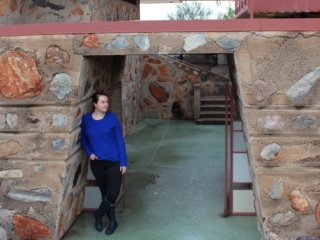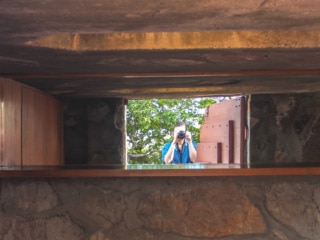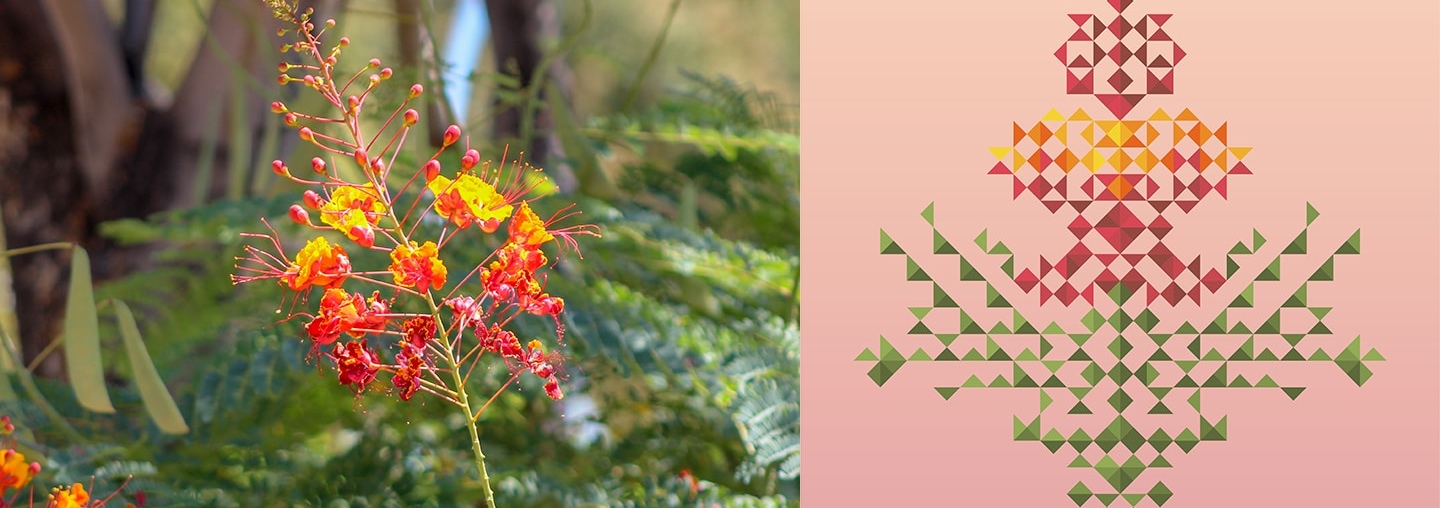
Learning By Doing Part 1 – Froebel’s Gifts
Meagan Vanderhill | Jun 27, 2019
For the next several months, Frank Lloyd Wright Foundation 2018-2019 Graphic Design Fellow, Meagan Vanderhill, will be exploring the concept of learning by doing. Here, she creates a nature pattern inspired by Froebel’s Gifts, childhood education objects that inspired Frank Lloyd Wright, and impacted his philosophy and approach to design.
Learning by doing is a philosophy I want to implement in my own life because as a designer learning is a way of living. Design is a process of asking questions and figuring out the answers through trial and error. A new project is an opportunity to learn and discover. Over the next few months I will be immersing myself in the practice of learning by doing by reaching out to people in this incredible community, researching Frank Lloyd Wright’s practices, following the principles of the Fellowship, and getting my hands dirty.
The Taliesin Fellowship began in 1932, realized by Frank Lloyd Wright and his wife Olgivanna. The purpose of the Fellowship was to create an immersive learning environment that established a community of well-rounded, creative individuals. The Fellowship was not a traditional education, but instead a hands-on experience that taught students about the natural world. Apprentices were encouraged to pursue and learn from many different types of experiences. In his teachings, Wright often encouraged them to learn by doing. They not only helped draft, build, cook, decorate, paint, create, and entertain – but also traveled, worked the land, played music, and lived in community with one another. More so than an education, the Fellowship was a way of living.

Fellowship members gather in front of the Drafting Studio at Taliesin West, 1940.
As the 2018-2019 Graphic Design Fellow for the Frank Lloyd Wright Foundation, by living and working at Taliesin West, I feel a deep connection to the legacy of the Taliesin Fellowship. Because of this connection I have not only been curious about what the Fellowship meant to Wright, but also, how I could discover for myself the lessons Wright’s apprentices learned while at Taliesin and Taliesin West. By learning more about the community and philosophy of the Fellowship, I am hoping to understand Wright’s guiding principles and apply them in my own design practice.
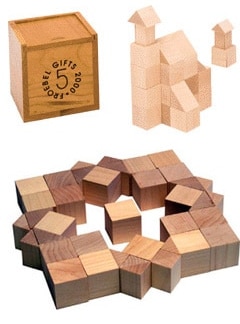
Froebel’s Fifth Gift, Cubes and Triangular Prisms. Photo via FroebelGifts.com.
I thought it was only fitting that I begin this exploration by researching and experimenting with the Gifts from Friedrich Froebel’s Kindergarten education. Froebel’s Gifts were purchased for Wright by his mother after she discovered them at the Philadelphia Centennial Exposition in 1876. The gifts shaped Wright’s early perception of the world and had a profound impact on his philosophy and approach to design and teaching. Each of the gifts are numbered one through ten and include simple objects like blocks, sticks, and cards. These objects were meant to encourage learning through play, observation, experimentation, and storytelling. They teach a foundational understanding of nature, pattern, and unity. Play begins with different geometric shapes and blocks that are put together in patterns to represent ideas. The purpose is to teach not only basic math and science, but also that everything in nature is part of a whole.
Taking inspiration from Froebel’s principles, I made observations about my environment through play and design. I focused this exercise on nature because Wright was inspired by nature and often created abstracted nature patterns using geometric shapes. Abstracting a plant in this way allowed me to learn how to communicate the traits of the plant I found best represented it. Recreating a plant out of geometric shapes was limiting, but taught me how to look at a plant and understand it’s structure and growth.
This abstraction is of the Red Bird of Paradise plant. It’s currently in bloom all over Scottsdale and its striking yellow, orange, and red flowers are so beautiful and intriguing. I was surprised how much I learned just by looking at it. For instance, I learned that the flowers bloom yellow and fade to orange and then to a deep red before dying. I could tell that all the flowers and branches grew from the central stem and fanned out as new growth began at the top. From these observations, the real play began! I created a grid based off of Froebel’s Fifth Gift. In this Gift, Froebel created triangular blocks to be arranged into squares and other shapes in order to create patterns that could express ideas, make observations, or tell stories. I decided to start by hand, using a ruler, pencil, and colored pencils. Wright created his nature patterns this way and getting away from my computer helped me better appreciate the time, effort, and thoughtfulness of Wright’s work. When creating art by hand, every stroke is intentional. Mapping it out by hand allowed me to later create an even more complex digital version that was still thoughtful and considered.
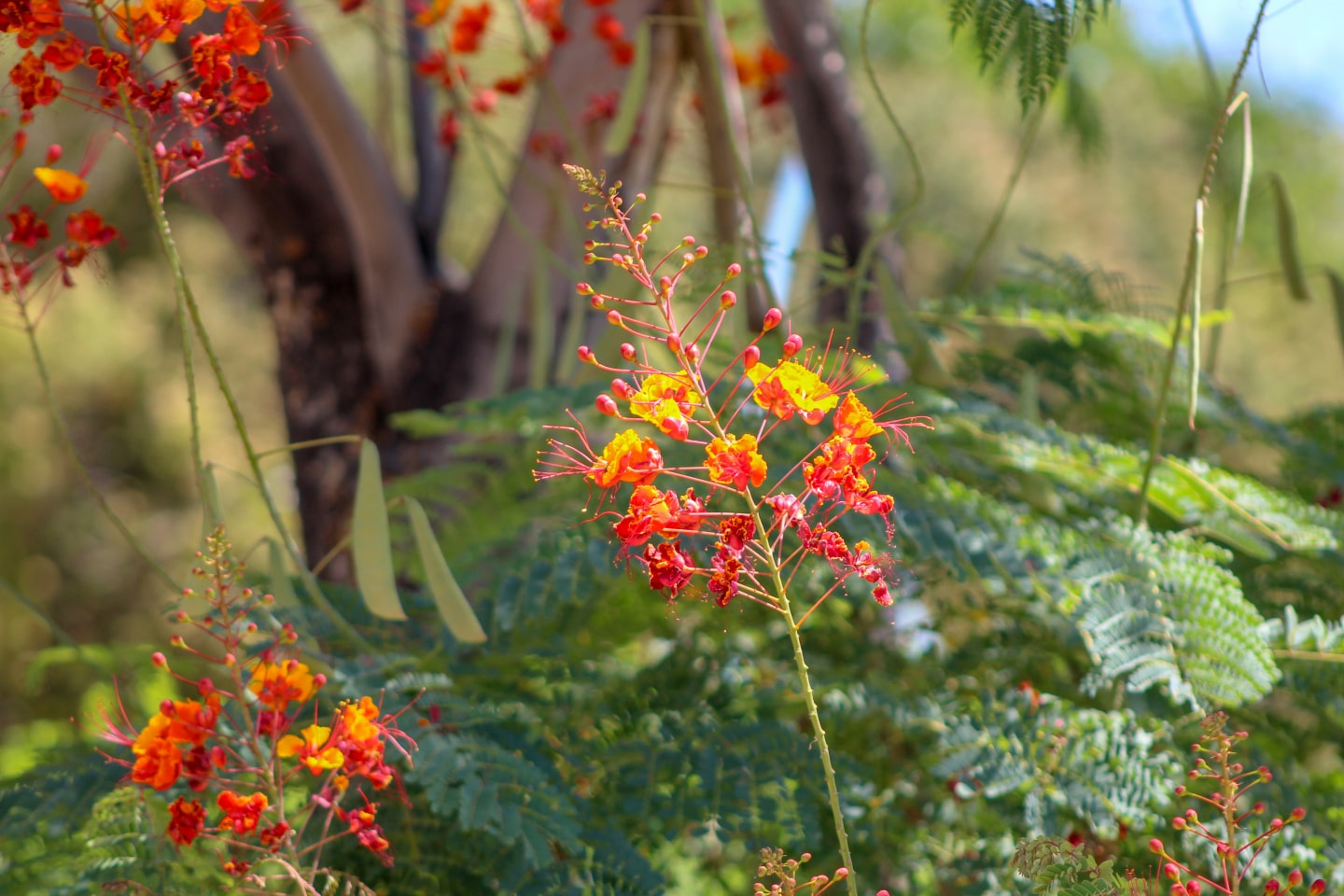
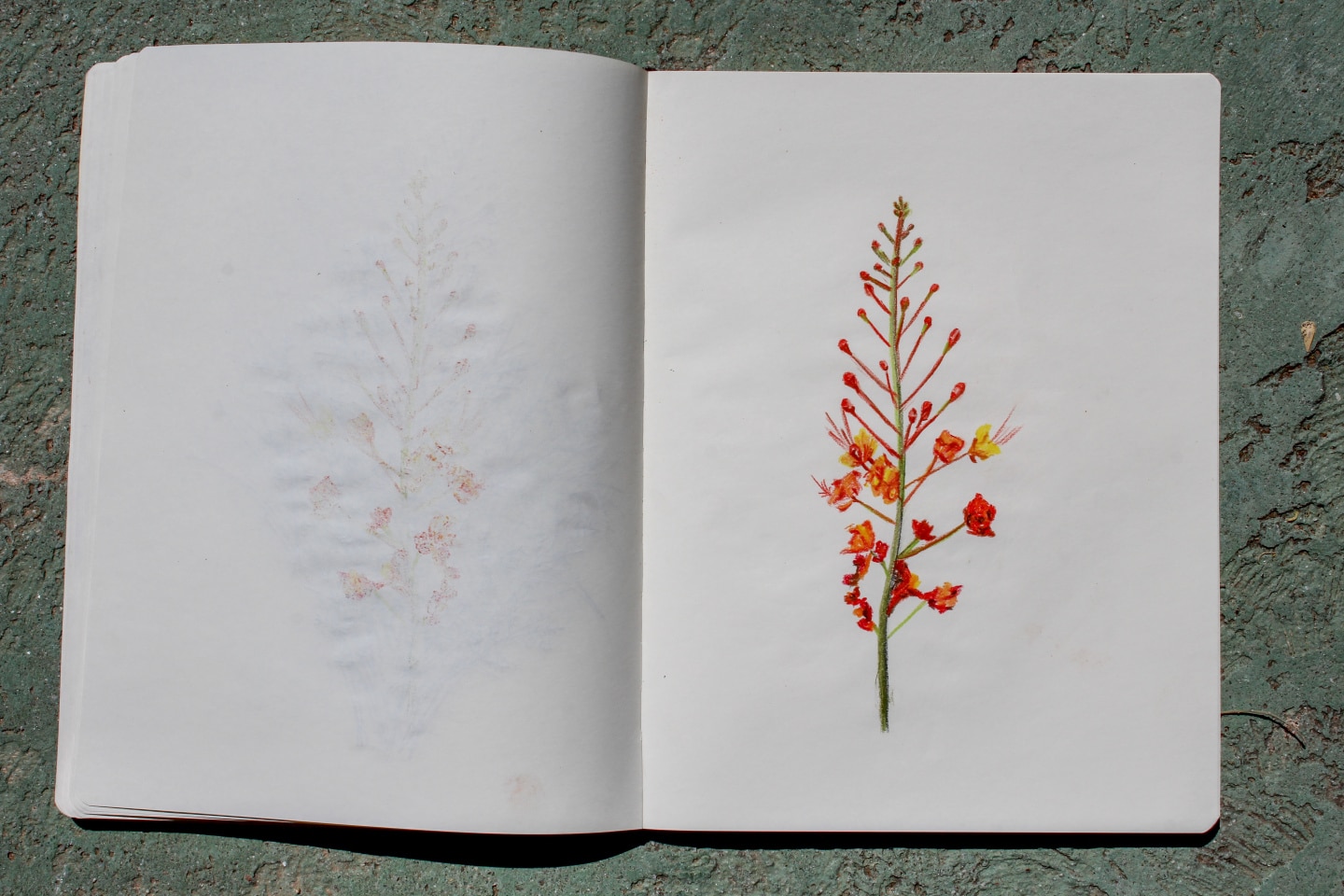
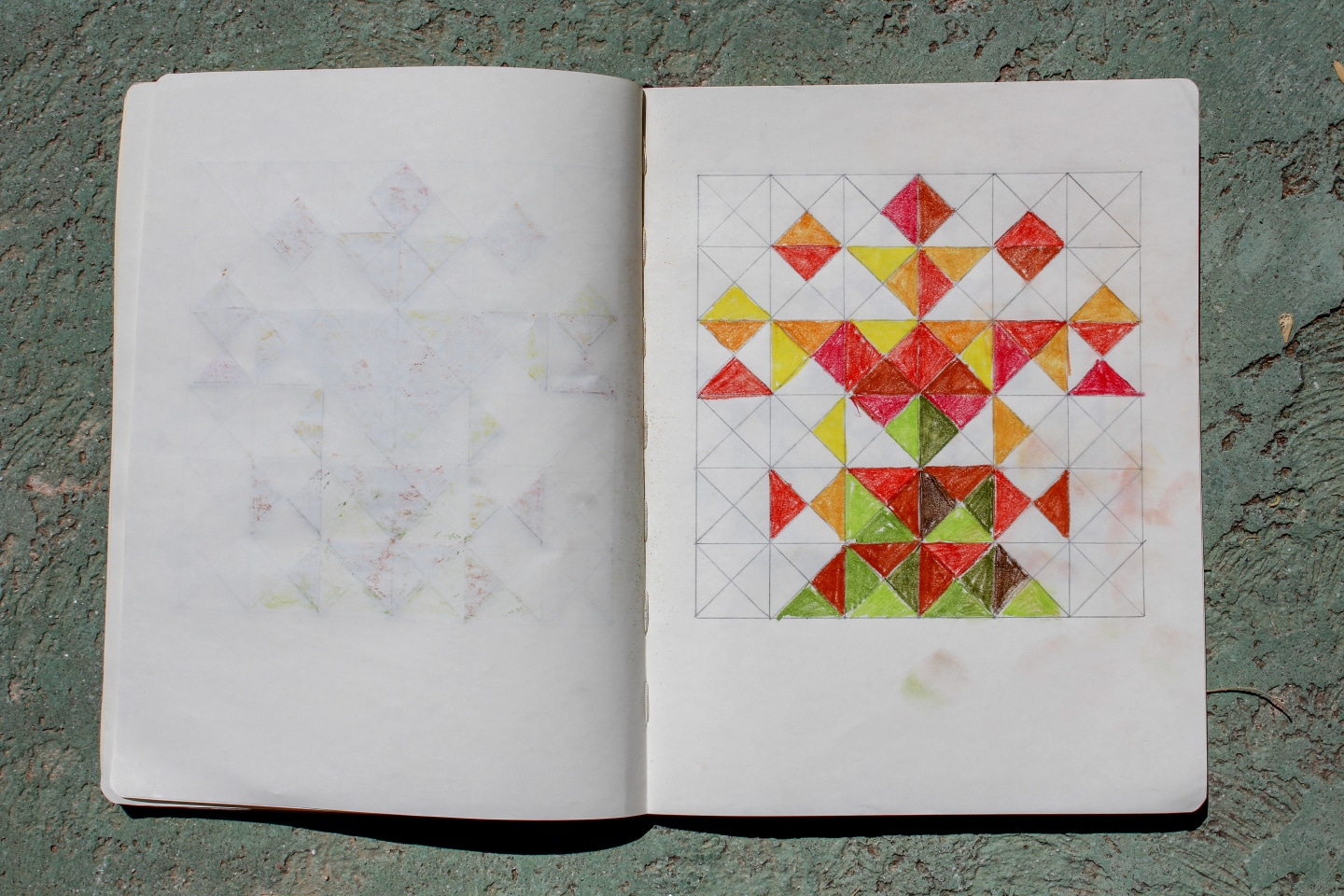
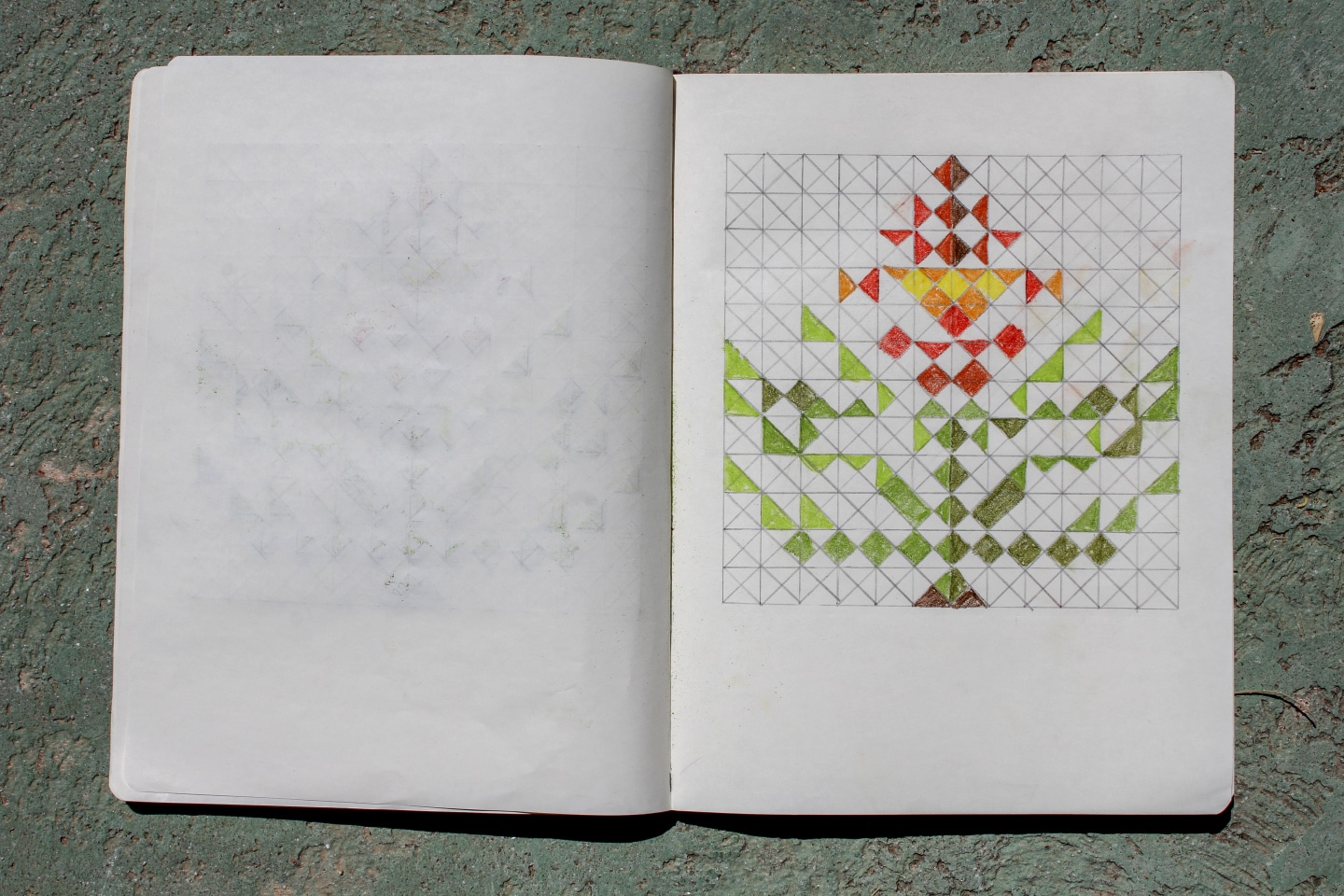
This exercise is my artistic take on one of Froebel’s Gifts. The most interesting part of creating this was using a strict grid in order to communicate what I was seeing. Using this technique truly changed the way I observe my environment. When I walk by a plant or a flower, rather than thinking about how beautiful it is, I’m now thinking more about how it grows, what shapes its’ leaves make, and what geometric shapes it resembles.
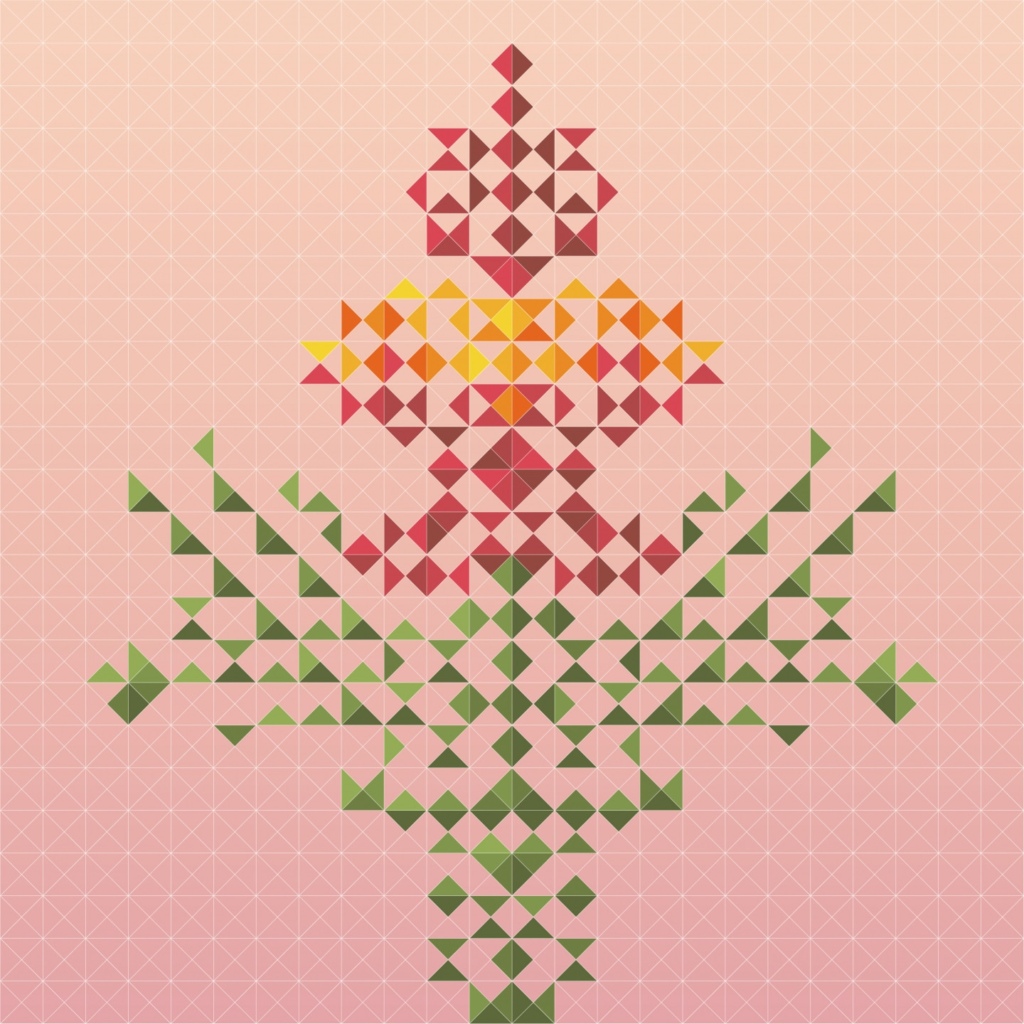
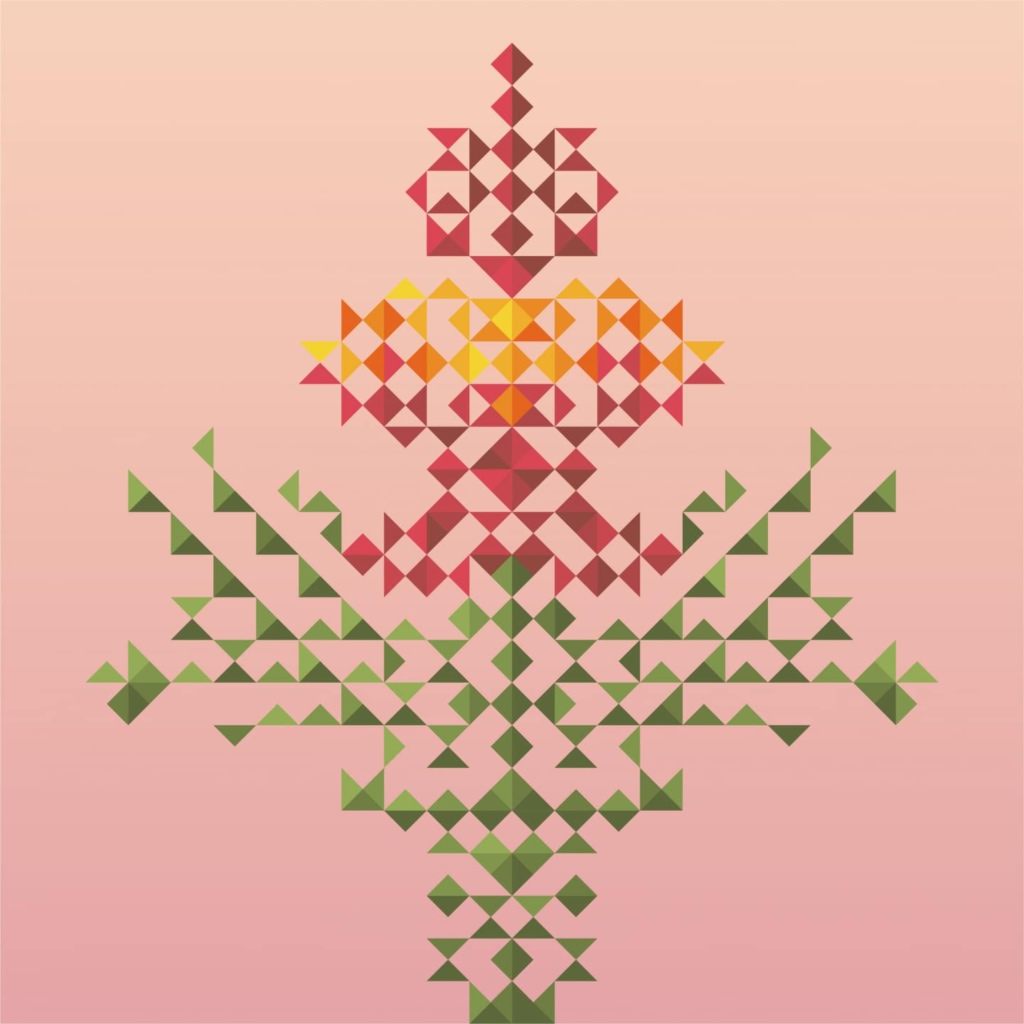
Being a part of the Taliesin West community has already begun to change me as a person and as a designer. I’ve learned to see the beauty in the things around me, while also observing them from a new perspective. As I continue this series of learning by doing, I look forward to uncovering how I can feel even more connected to the legacy of the Fellowship. Follow along with me as I explore more elements of the Fellowship and learn by trial and error.

